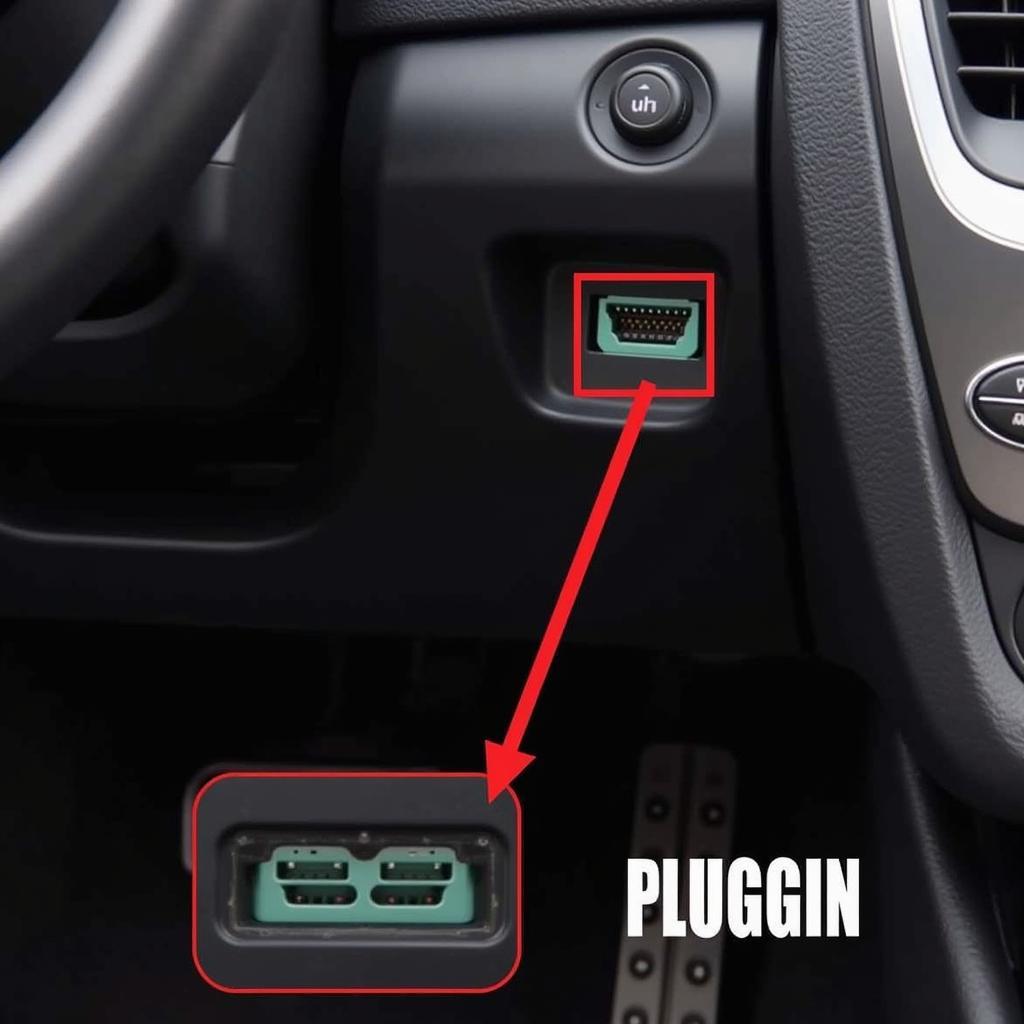Understanding your Chevy Volt’s health just got easier with an OBD2 scanner. Whether you’re dealing with the check engine light or want to monitor your car’s performance, an OBD2 scanner can be an invaluable tool for Volt owners. This comprehensive guide will walk you through everything you need to know about OBD2 scanners for your Chevy Volt.
Why You Need an OBD2 Scanner for Your Chevy Volt
Your Chevy Volt, like all modern vehicles, comes equipped with an onboard diagnostic system (OBD2). This system continuously monitors various systems in your car, and when it detects an issue, it generates a Diagnostic Trouble Code (DTC) stored in the car’s computer. An OBD2 scanner allows you to:
- Read and Understand DTCs: Decipher those cryptic codes and understand what’s wrong with your car.
- Reset the Check Engine Light: After addressing the issue, you can use the scanner to turn off the check engine light.
- Monitor Live Data: View real-time data from your Volt’s engine, transmission, and other vital systems. This can be helpful for diagnosing intermittent problems or for simply keeping an eye on your car’s performance.
- Enhanced Troubleshooting: Get to the root of problems faster by accessing more detailed information than your dashboard provides.
Choosing the Right OBD2 Scanner for Your Chevy Volt
Not all OBD2 scanners are created equal. Here’s what to consider when selecting one for your Volt:
- Compatibility: Ensure the scanner explicitly states compatibility with Chevrolet vehicles, specifically the Volt model year.
- Functionality: Decide what features are essential for you. Basic scanners read and clear codes, while more advanced options offer live data, graphing, and even manufacturer-specific code definitions.
- Budget: Scanners range in price from affordable basic models to professional-grade tools with extensive capabilities.
- User Friendliness: Look for a scanner with a clear display, intuitive interface, and easy-to-understand instructions.
Common Chevy Volt OBD2 Codes
Here are some frequently encountered OBD2 codes in Chevy Volts and their potential meanings:
- P0420: Catalyst System Efficiency Below Threshold (Bank 1) – This code often indicates a failing catalytic converter, but it could also point to a problem with the oxygen sensors.
- P0171: System Too Lean (Bank 1) – This code suggests that the engine is running lean, meaning there is too much air in the air-fuel mixture. This could be due to a vacuum leak, a faulty mass airflow sensor (MAF), or a problem with the fuel injectors.
- P0101: Mass Air Flow (MAF) Sensor Performance – This code signals a potential issue with the MAF sensor, which measures the amount of air entering the engine.
- P0300: Random/Multiple Cylinder Misfire Detected – This code indicates that one or more cylinders in the engine are misfiring, which can be caused by a variety of issues, including faulty spark plugs, ignition coils, or a problem with the fuel system.
- P0401: EGR Flow Insufficient Detected – This code indicates a problem with the Exhaust Gas Recirculation (EGR) system, which helps reduce emissions.
Important Note: These are just a few examples. Always refer to a reliable OBD2 code database or consult with a qualified mechanic for accurate diagnosis and repair.
Using an OBD2 Scanner on Your Chevy Volt
Using an OBD2 scanner is typically straightforward. Here’s a general guide:
- Locate the OBD2 Port: The port is usually located under the dashboard on the driver’s side.
- Plug in the Scanner: Turn the ignition to the “on” position (do not start the engine).
- Connect to the Scanner: If using a Bluetooth scanner, pair it with your smartphone or tablet.
- Read Codes: Select the option to read DTCs.
- Interpret Codes: Note down the codes and research their meanings.
- Address the Issue: Diagnose the problem using the code information and other troubleshooting methods.
- Clear Codes: After resolving the issue, use the scanner to clear the codes and check engine light.
OBD2 Scanners: A Volt Owner’s Best Friend
Owning an OBD2 scanner empowers you to take control of your Chevy Volt’s maintenance. From simple code reading to in-depth performance monitoring, an OBD2 scanner can save you time, money, and unnecessary trips to the mechanic.
Pro Tip: Keep a record of the codes you encounter and the repairs you make. This history can be invaluable for future troubleshooting.
Frequently Asked Questions (FAQ)
Can I use any OBD2 scanner on my Chevy Volt?
Not necessarily. Always verify compatibility with Chevrolet vehicles and your Volt’s specific model year.
Will an OBD2 scanner tell me exactly what’s wrong with my car?
OBD2 scanners provide diagnostic codes, which are starting points for diagnosis. They don’t always pinpoint the exact issue but offer valuable clues to guide further troubleshooting.
Can I fix my Chevy Volt myself using an OBD2 scanner?
While a scanner can help you understand the problem, repairs often require mechanical expertise. If you’re unsure, consult a qualified mechanic.
How often should I use my OBD2 scanner?
It’s a good practice to scan for codes periodically, especially if you notice any unusual performance issues or the check engine light illuminates.
Where can I find more information about specific OBD2 codes?
Online OBD2 code databases or your vehicle’s service manual are excellent resources for detailed code explanations.
Need More Help with Your Chevy Volt?
We’re here to assist! For expert advice and support with your Chevy Volt’s OBD2 system and diagnostics, contact us via WhatsApp: +1(641)206-8880 or email: [email protected]. Our 24/7 customer support team is standing by to help you.


